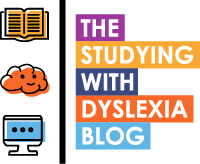Neurodiversity Celebration Week is an important time to reflect on the wide range of neurological differences that exist in our world. One such condition that often goes unnoticed is Fetal Alcohol Spectrum Disorder (FASD). FASD is a lifelong neurodevelopmental condition caused by exposure to alcohol in the womb. It results in brain damage that can affect various aspects of an individual’s development, including memory, information processing, motor skills, spatial awareness, balance, coordination, and social and emotional growth.
At Studying with Dyslexia, we are dedicated to supporting and educating the community about all forms of neurodivergence, including FASD. Our aim is to provide resources and insights for those affected by neurodevelopmental conditions to help them succeed in educational settings and beyond.
The Unique Challenges of FASD
It’s important to recognise that each individual with FASD is different. The condition affects people in various ways, and as a result, the support strategies needed for each person may differ significantly. While some individuals with FASD may have specific facial features, such as a thin upper lip, smooth philtrum, and small eye openings, only about 1 in 10 affected individuals will display these characteristics.
Students with FASD often struggle with retaining information, which means over-learning is essential. This doesn’t just apply to academic material, but to social expectations as well. FASD can also impact a person’s ability to understand the cause and effect of actions, making behaviour management a particular challenge.
Effective Support Strategies for FASD Students
When working with students with FASD, it’s essential to recognise the complexity of their needs. Here are a few things to consider when supporting these students in the classroom:
· Expectations should be limited and consistently reinforced. It’s more effective to focus on a small number of behaviours and reinforce them with 100% consistency. Overloading a student with too many expectations can be overwhelming and anxiety-inducing.
· Think in terms of stages, not ages. Students with FASD may function at a developmental level that is significantly younger than their chronological age, so adjusting expectations accordingly is crucial.
· Information transfer can be difficult. Pupils with FASD often struggle to transfer knowledge from one context to another. For example, a student may perform a task correctly in one setting but fail to apply the same skills in another situation.
· Memory challenges are a significant aspect of FASD. Confabulation, or "filling in the gaps" in memory, is common. A person with FASD might present inaccurate information but genuinely believe it to be true, often leading to misunderstandings that can be interpreted as dishonesty.
· Receptive language skills may be weaker than expressive skills. This means that while a student with FASD may appear to speak fluently, they may have difficulty understanding what is said to them.
Overlapping Strategies
Many aspects of other neurodivergent conditions overlap with FASD, so strategies that work for other conditions, such as autism or ADHD, can also be effective for students with FASD. However, the most effective approach is to know your student and tailor the strategies to suit their specific needs.
Each student with FASD has a unique set of challenges and strengths, and with the right support, they can thrive in an educational environment.
Thank you for reading! If you found this article helpful and want to stay updated with the latest insights on dyslexia and neurodiversity, please sign up for our newsletter. To support our work and help us keep the blog running, consider supporting the blog by clicking here.
